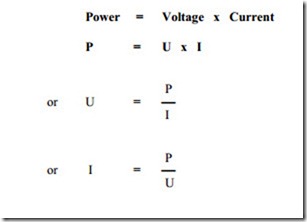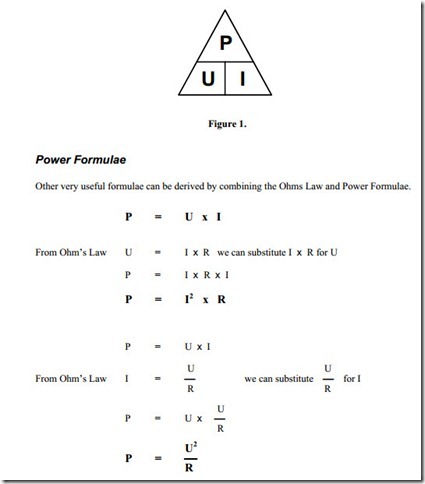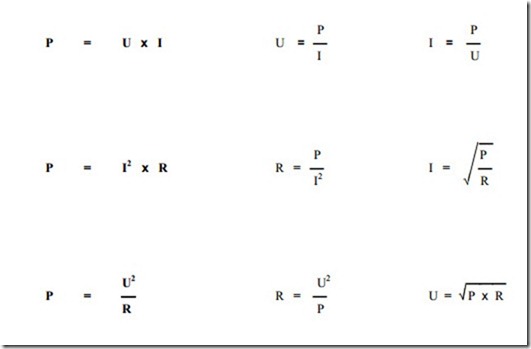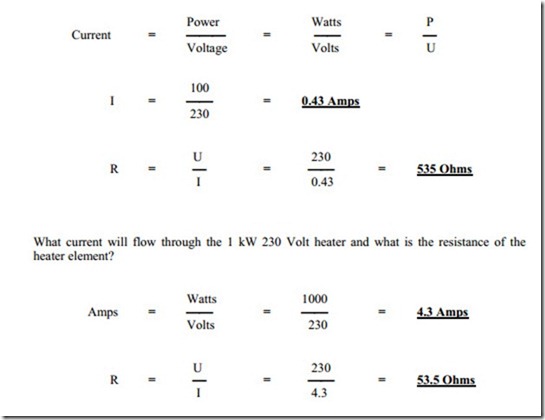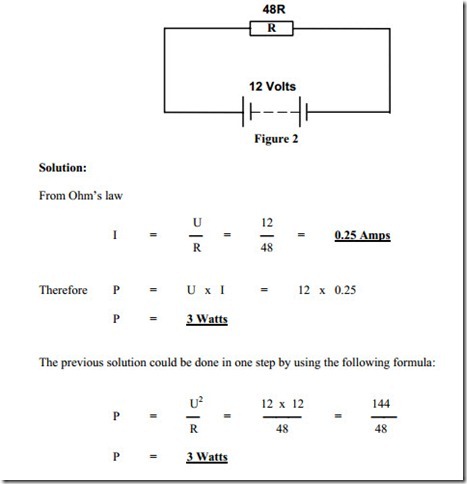Power
A difference in potential, between any two points in an electrical circuit, gives rise to a voltage. If there is a complete circuit this voltage causes current to flow. Here is an obvious case of a force causing motion, and so causing work to be done. Whenever a voltage causes electrons to move, work is done in moving them.
The rate at which this work is done is called electrical power. It is represented by the symbol P.
The energy consumed in moving the electrons against the frictional resistance of the conductor, is converted into another form of energy – namely heat. This rate of energy conversion is what the word power really means.
The basic unit in which electrical power is measured is the Watt ( W ). The Watt can be defined as:
“The rate at which work is done when an EMF of one Volt causes a current of one Amp to flow”.
Examples
The power rating is marked on most electrical devices. For example a lamp might be marked 100 Watt, or a heater might be marked 1 kW. These power ratings indicate the rate at which electrical energy is changed into another form of energy such as light and heat. The 1 kW heater consumes ten times more electricity than the 100 Watt lamp.
Each device is designed to operate at a particular voltage level. This is equally as important and will also be marked on the device.
Given the values of 100 Watts, 230 Volts, other values can be calculated e.g. current and resistance.
Example
Calculate the Power used or dissipated by the resistor in the circuit below.
Refer to Figure 2.
